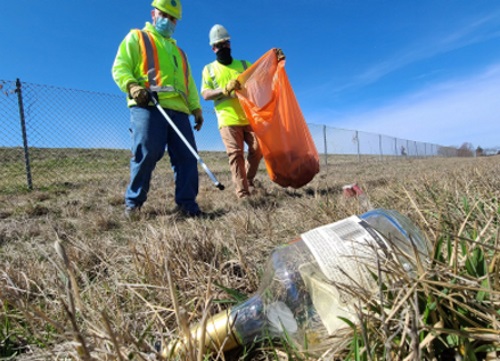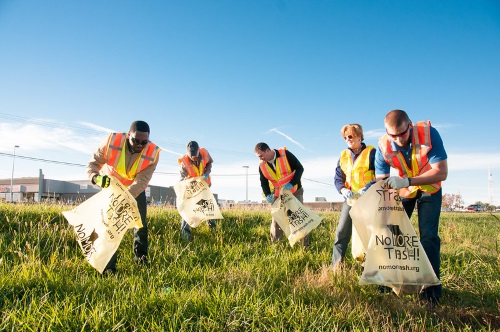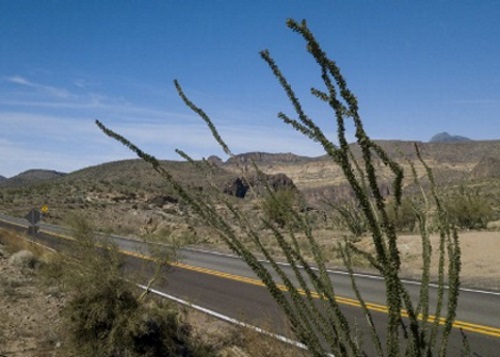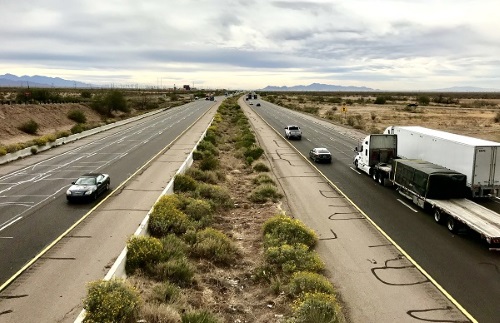FEDERAL ACTION
AASHTO Provides Perspective on Return of Congressional Earmarks – AASHTO Journal
AASHTO Issues 2021 Benefits of Transportation Report – AASHTO Journal
Illinois Sen. Duckworth Unveils Sweeping Environmental Justice Legislation – St. Louis Public Radio
Farm groups ask Biden to include rural investments in infrastructure plan – Capital Press
McConnell Rules Out Backing for Tax-Funded Infrastructure – Bloomberg
COVID-19
Trudeau Says US-Canada Border Won’t Reopen Anytime Soon – TravelPulse
The Local Policies That Will Outlast the Pandemic – CityLab
Jersey City to expand on-demand transport after shift in commuting habits – TNW
Caltrans Considering Freeway Closures Due to PPE Litter on Highways – KNSD-TV
NEPA
FAA Releases LaGuardia AirTrain Final Environmental Impact Statement – FAA (Press release)
INFRASTRUCTURE RESILIENCE AND SUSTAINABILITY
Four State DOT Projects Named ‘Infrastructure Gamechangers’ – AASHTO Journal
Caltrans Showcases the Achievements of Landmark SB1 Legislation on Rebuilding the State’s Aging Infrastructure – Caltrans (video)
Alabama State Port Authority’s growth story transcends geographical luck – FreightWaves
Teaching the next generation of engineers how to make Puerto Rico’s infrastructure resilient – University of Rhode Island (Press release)
AIR QUALITY
Senators debate what cutting carbon emissions means for transportation industry – Nexstar
Jet fuel made from food waste could slash carbon emissions – Energy Digital
ENVIRONMENTAL JUSTICE
Unjoyful noise: Port Authority tunnel fans disturb Dormont residents – Post-Gazette
Road Salt Is Imperiling Aquatic Ecosystems. It Doesn’t Have To. – Undark (Opinion)
Buttigieg tweet on Chinatown shines light on racism in infrastructure – KYW
CULTURAL RESOURCES
New traffic lights near historic buildings stopped after preservationist objects – KTBS-TV
HEALTH AND HUMAN ENVIRONMENT/ACTIVE TRANSPORTATION
Bike Fort Collins Discovers Mayoral and City Council Candidates Views on Bikes and Alternative Transportation – North Forty News
Biking Was Big in Philly Even Before the Pandemic. Then the Past Year Sent it Skyrocketing – Philadelphia
Making Milwaukee’s Downtown Better For Pedestrians Will Be Top Of Mind In The New Development Plan – WUWM
Wet Weather Biking Virtual Workshop – Penn State
Steady Rise in Pedestrian Fatalities Rings Alarm Bells – Texas DOT (Press release)
FEDERAL REGISTER NOTICES
White House Environmental Justice Advisory Council; Notification of Virtual Public Meeting – EPA (Notification of public meeting)
Federal Aluminum Aquatic Life Criteria Applicable to Oregon – EPA (Final rule)
Air Plan Approval; Texas; Revisions to the Texas Diesel Emissions Reduction Incentive Program – EPA (Proposed rule)
Public Water System Supervision Program Revisions for the Navajo Nation – EPA (Notice of tentative approval)
Board of Scientific Counselors (BOSC) Sustainable and Health Communities Subcommittee Meeting—March 2021 – EPA (Notice of public meeting)
Notice of Intent To Amend the California Desert Conservation Area Plan and Prepare an Associated Environmental Assessment for the Oberon Solar Project, Riverside County – Bureau of Land Management (Notice of intent)
Notice of Intent To Rule on a Land Release Request at Council Bluffs Municipal Airport (CBF), Council Bluffs, Iowa – FAA (Notice of request to release and sell airport land)
Waiver of Aeronautical Land Use Assurance: Independence Municipal Airport (IDP), Independence, KS – FAA (Notice of intent of waiver with respect to land use change from aeronautical to non-aeronautical)
Takes of Marine Mammals Incidental to Specified Activities; Taking Marine Mammals Incidental to the Parallel Thimble Shoal Tunnel Project in Virginia Beach, Virginia – National Marine Fisheries Service (NMFS) and NOAA (Notice; issuance of Renewal incidental harassment authorization)
Takes of Marine Mammals Incidental to Specified Activities; Taking Marine Mammals Incidental to the Old Sitka Dock North Dolphins Expansion Project in Sitka, Alaska – National Marine Fisheries Service and NOAA (Notice; proposed issuance of an Incidental Harassment Authorization; request for comments)
Revolving Fund Program—Water and Environmental Provisions of the Agricultural Improvement Act of 2018 – Rural Utilities Service (Final rule)
Advisory Committee on Earthquake Hazards Reduction Meeting – National Institute of Standards and Technology (Notice of open meeting)
Agency Information Collection Activities; DOI Generic Clearance for Crowdsourcing and Citizen Science Activities – Interior (Notice of information collection; request for comment)




